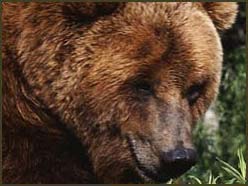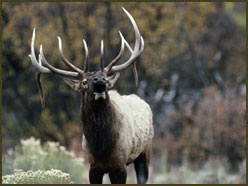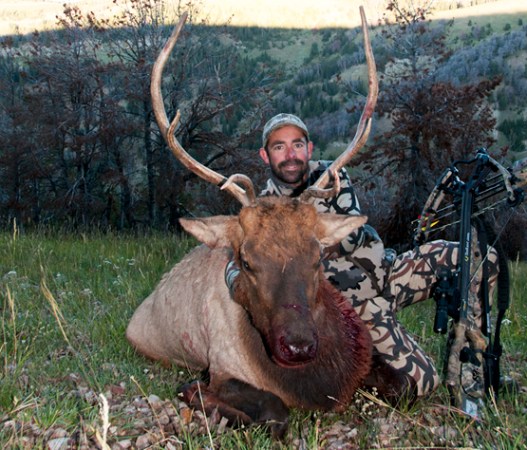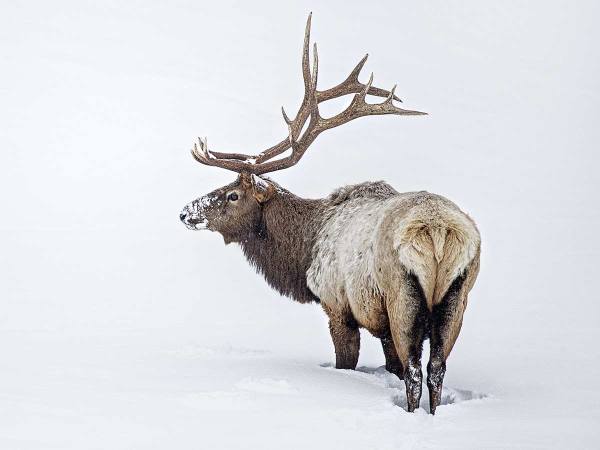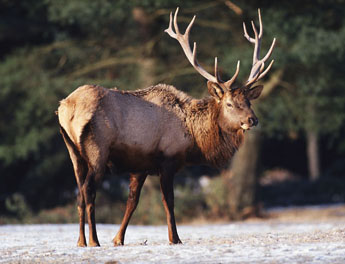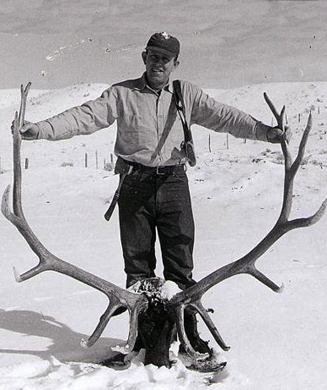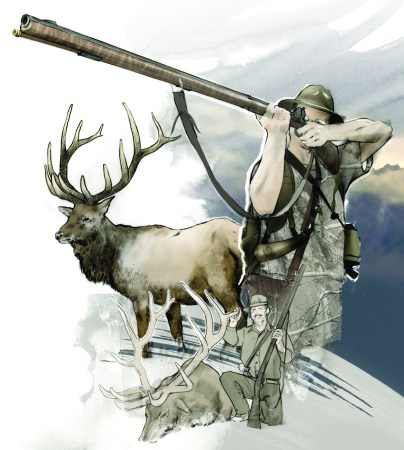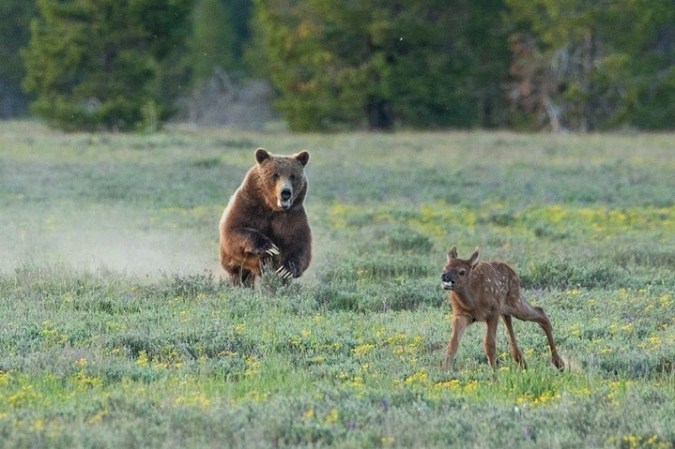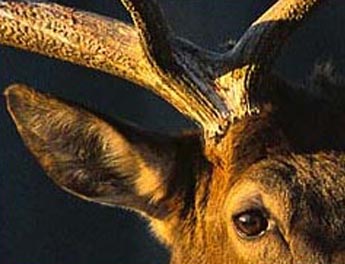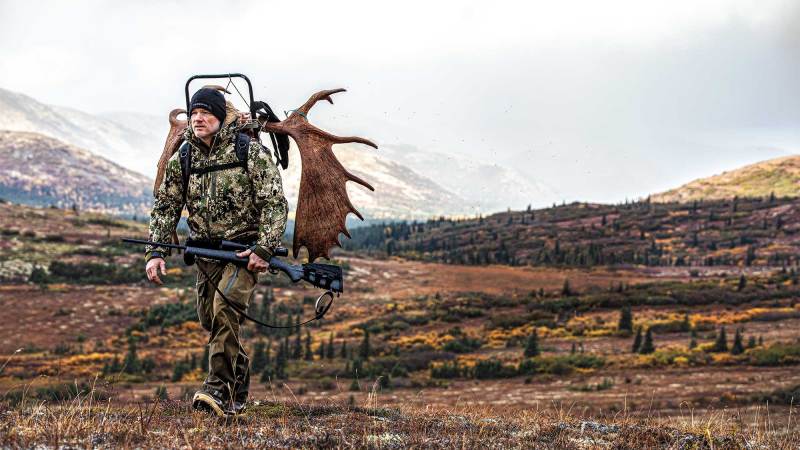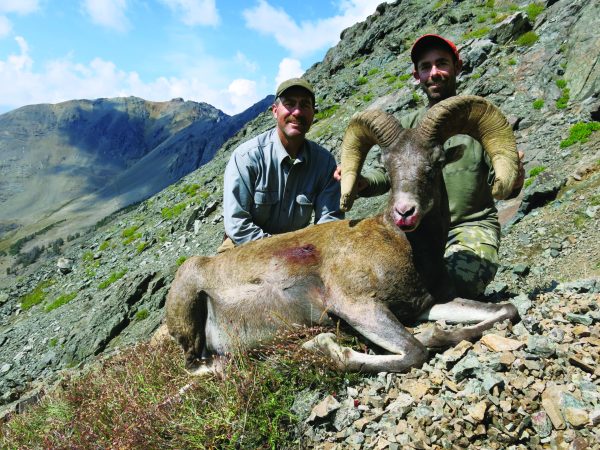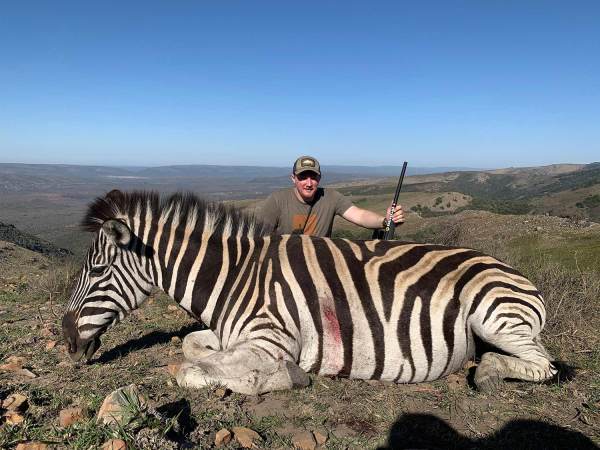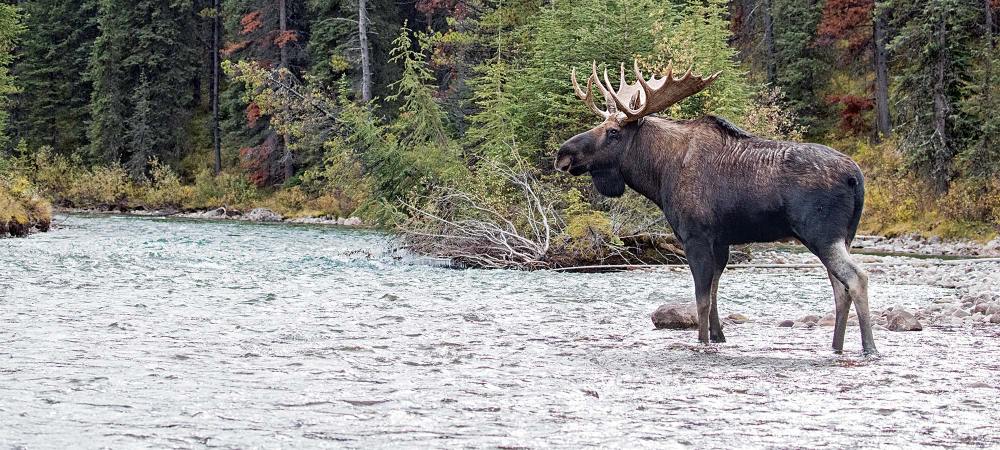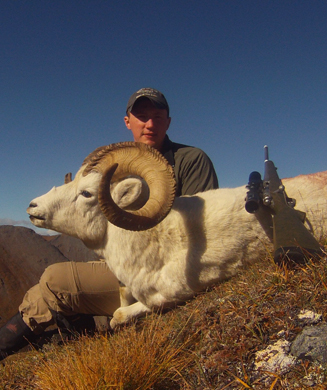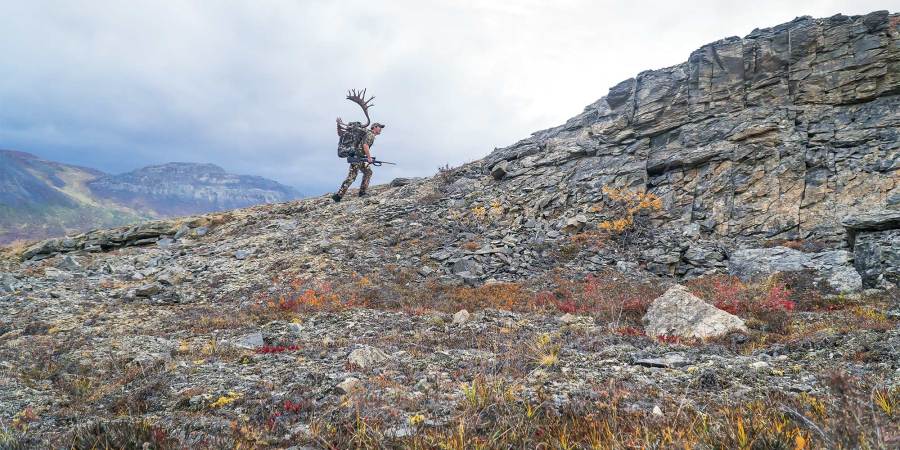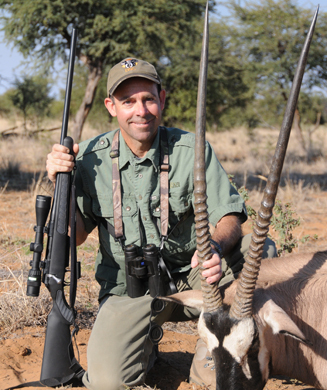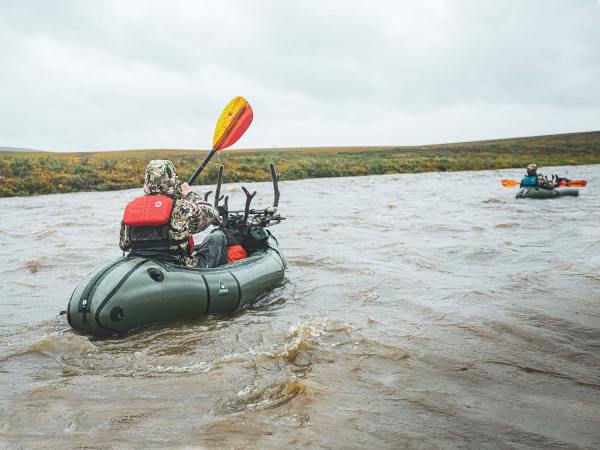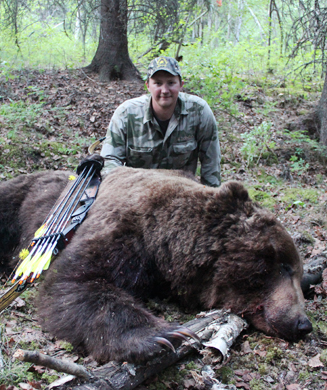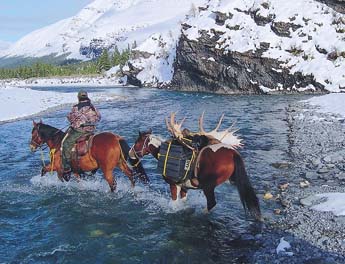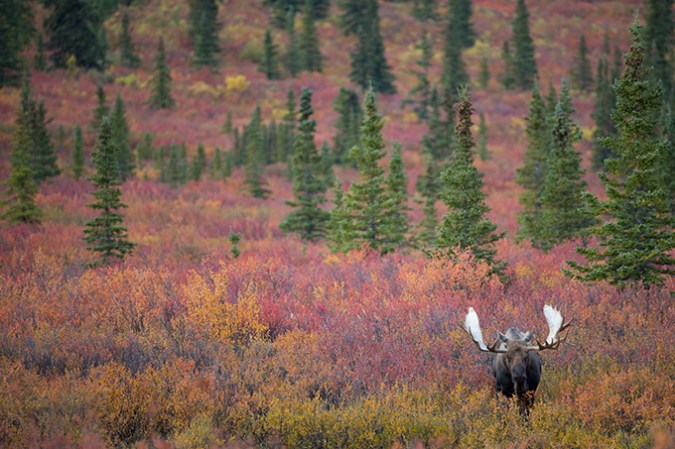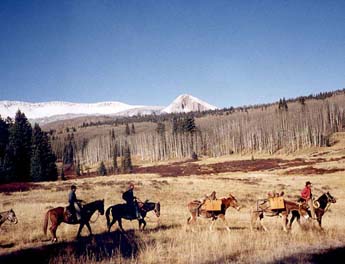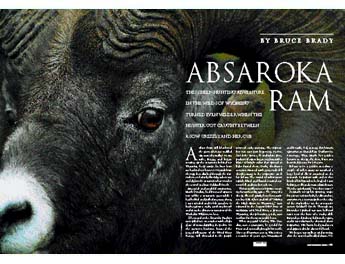We don’t dare move. By the clock it is legal shooting time on the opening morning of Wyoming’s rifle elk season. But falling snow, fog and heavy cloud cover make it impossible to see the bull bugling and raking a tree somewhere in the vast meadow below us. My guide, Tim Doud, is afraid that if we ease through the timber to get a better vantage point we might spook the bull before I can see clearly enough for a shot.
At the same time, we’re nervous about creeping through this white bark pine forest in the dim light because we saw the fresh tracks of a grizzly bear as we rode through the area on the way into camp just yesterday.
Waiting there anxiously in the gloaming light, ears craned to catch the bull’s slightest moan, I keep hearing Doud’s speech at the trailhead echoing in my mind: “Our camp is at Bliss Creek meadows in the Washakie Wilderness, 22 miles up the South Fork of the Shoshone River. The elk hunting is some of the best you’ll ever see and it gets better every year. But it’s also smack in the middle of one of the densest concentrations of grizzlies in the Lower 48. To hunt safely in there you’ve got to be constantly aware of the bears.”
I’ve come to hunt with Doud because he has twice won the Wyoming elk-calling championship and has a deserved reputation for putting his bow and rifle hunters onto very big bulls. But more important, I’ve recently relocated from Vermont to the northern Rockies and want to learn how to hunt successfully and unmolested in grizzly habitat.
The wiry 39-year-old beside me in the dark timber, the one with the salt-and-pepper beard and the cowboy hat rimmed with black bear claws, is one of the acknowledged masters at doing just that. For five months each year, for each of the past 11 years, Doud has lived deep in the Wyoming backcountry among the steadily expanding grizzly population of the greater Yellowstone ecosystem.
As a result, he has become a serious student of Ursus arctos horribilis behavior, especially in the bears’ encounters with humans. On the basis of his experience, the state of Wyoming now has Doud teach courses for outfitters, guides and hunters called “Safety for People, Safety for Bears.”
“My attitude is that the grizzlies have as much right to be in the wilderness as any human hunter,” Doud says. “Our goal is to take advantage of the tremendous hunting opportunities here in the northern Rockies while behaving in ways that do not attract bears or provoke attacks. We aim for peaceful coexistence.”
Indeed, almost every facet of Doud’s comfortable camp is designed with bears in mind. No snacks, no booze, no candy bars, no soda pop, not even used sandwich bags are allowed in the sleeping tents. All food and beverages, other than water, are stored in bear-proof lockers in the mess tent, which is kept scrupulously clean.
Grain for the horses and mules is stored 20 feet off the ground in an elaborate enclosed cache suspended between six trees. Any fresh elk meat, hides or racks are kept 200 yards from camp on a similar platform. The trunks of the trees that support the cache platforms are wrapped in sheets of aluminum that make them virtually unclimbable.
“By paying that kind of attention to detail, we’ve never had a bear in camp,” Doud says. “Make no mistake, they’re all around us. But we don’t give them any reason to come in.”
Dawn is finally upon us and Doud signals that we should move. We leave the horses and drop through the timber to the edge of the lower meadow and peer out. Six hundred yards away, across the Shoshone River, the bull we heard in the low light bugles one last time before filtering into the far tree line.
Doud calls to him, attempting to halt his retreat. The bull answers, but he’s already going hard up the mountain and deeper into the forest. Doud decides that we will hunt the ridges on this side of the meadow first. If we d’t get into elk in the series of finger parks above us, we’ll loop toward the bull we just watched disappear.
Even though I’m carrying a .300 Winchester Magnum, Doud asks if I’ve got my pepper spray canister accessible before we begin the climb. Doud never carries a firearm when guiding. He relies totally on the spray. And he believes even armed hunters should rely on the pepper gas first and resort to the gun only as a last resort.
“If you study all the information on bear attacks, you’ll see that in more than 95 percent of the cases, the spray will stop and repel a charging bear,” Doud says. “Besides, it’s just plain easier to be effective with the spray than with a gun. The gas canister throws a cloud of defense out in front of you. A bullet’s a small thing and I just don’t think most people would have the ability or the presence of mind to shoot accurately when being attacked at close quarters. I know I wouldn’t.”
I pat the pepper spray in its holster on my right hip and he nods. As we climb up into the deep timber, I am aware of the fact that in order to hunt well, we have to break several rules of safe behavior in bear country. We can’t make noise that might ordinarily alert a bear to our presence. And we are walking into the wind instead of keeping it at our back. But there’s nothing we can do about violating these rules other than to stay hyperalert.
Fifteen minutes later, we come to the edge of a small park. Doud mews on a diaphragm call. Two cow elk appear on the ridge above us, looking down through the falling snow into the trees where we’re hiding. After several minutes, they slide to the north, and almost immediately, from much farther up the mountain, we hear the high, three-note song of a mature, rutting bull.
“That one’s in the avalanche slide,” Doud whispers urgently. “He’s gonna go for the top of the mountain. If we don’t move fast, we’ll never catch him.”
We drop our packs. And now we’re sprinting up an acute incline through sagebrush and over loose, snow-clad chunks of stone. In minutes my lungs feel like someone’s tossed a lighted match down my throat. My thighs, hamstrings and calves are threatening to charley horse.
At last we reach a plateau of sorts and the snow’s falling very hard. We race across the flat into another patch of white bark pine, the preferred habitat of grizzlies in early fall, but I’ve got no time to be concerned; the bull is screaming nearly nonstop ahead of us not 200 yards. And then he goes quiet.
Doud slows. He slips and peeks, slips and peeks and suddenly ahead we can see where the timber gives way to a second small park and beyond it a dizzying avalanche chute gouged into the side of the mountain. At least 20 cows and three young satellite bulls mill at the base of the chute. But we can’t see the herd bull.
A tremendous crash sounds in the timber to our left and for a second I think we’ve been winded. The breeze, however, is steady and in our face.
“He must have run off a satellite,” Doud whispers, pointing in the direction of the crash. “I think he’s back that way.”
As if to confirm Doud’s suspicion, the harem master sounds off again, so close that his chuckle seems to rattle in my chest. We retreat and sneak to where we heard him. Doud eases out from behind a tree, freezes, then slides back to me.
“He’s right in front of us and he’s a good one,” he whispers. “Get out there and take him.”
I come out from behind the tree on my knees. Through the timber 150 yards out into the aft end of the park the massive-bodied, 300-class 7 by 6 lays his rack back on his haunches and bellows his dominance into the cold October dawn. My shot takes him through both shoulders and he staggers. The bull is down. His herd panics, then explodes pell-mell straight up the face of the avalanche chute.
I’m stunned. For the first time in my life, I’ve harvested a big-game animal on opening morning. We walk up to the bull through the driving snow, marveling at the great sweep of his non-typical rack and the incredible bulk of his blond torso. For a minute or so, I’m filled with melancholy at the idea that his thundering bugles will no longer sound except in the snowy canyons of my memory. Then I think happily how he will feed my family through the coming winter and how wonderful his rack will look on my wall, and I find myself silently thanking him and the wilderness that sustained him all these years.
The first thing Doud says after congratulating me is, “Okay, we’ve got to be careful now. You haven’t just shot a magnificent bull here. You’ve set a bear bait.”
Doud says that research has shown that some grizzlies are conditioned to move into hunting areas in the fall in search of elk carcasses. There’s even some evidence that suggests the bears are becoming conditioned to the report of rifle shots and immediately come to investigate.
We slide the safety caps halfway off our pepper spray canisters, and, just in case, I reload my rifle. Then we head back through the white pines to retrieve our gear. An hour later we’ve finished taking pictures and the snow has slowed to flurries. We look for ways a bear might approach us, then begin to skin and quarter the bull, taking care not to gut him until we absolutely have to; the entrails and blood will throw a powerful scent stream for miles and we’re in no mood for surprise visits. As we work, one person constantly scans the tree line.
When each quarter is separated from the carcass, we throw it across our shoulders and take it downhill some 200 yards. There Doud and I lash the quarters, backstraps and tenderloins to a crossbar we’ve affixed between two young spruce trees. That done we cut a dozen or so aromatic softwood saplings and arrange these in a dense tepee formation around the meat.
“If you can’t get your meat out of the kill area immediately in grizzly terrain, you want to get it at least 200 yards from the gut pile,” Doud says. “The bear will always go to the strongest smell first, which is the intestines. Elk meat itself doesn’t have much of an odor, and by covering it with young firs, you not only reduce the scent, but protect it from scavenger birds.”
We hang the cape and rack high in a tree another 200 yards away from the meat, then head back to camp. The minute we climb off our horses, Doud has us strip out of our bloody clothes, put them in plastic bags and hoist them up onto one of the bear-proof platforms. (He tells people who don’t have such platforms already built to hang food, meat and bloody clothing at least 10 feet off the ground and at least four feet from either side or top supports.) Our knives and game saws go immediately into a pan of bleach and water where they are scrife, I’ve harvested a big-game animal on opening morning. We walk up to the bull through the driving snow, marveling at the great sweep of his non-typical rack and the incredible bulk of his blond torso. For a minute or so, I’m filled with melancholy at the idea that his thundering bugles will no longer sound except in the snowy canyons of my memory. Then I think happily how he will feed my family through the coming winter and how wonderful his rack will look on my wall, and I find myself silently thanking him and the wilderness that sustained him all these years.
The first thing Doud says after congratulating me is, “Okay, we’ve got to be careful now. You haven’t just shot a magnificent bull here. You’ve set a bear bait.”
Doud says that research has shown that some grizzlies are conditioned to move into hunting areas in the fall in search of elk carcasses. There’s even some evidence that suggests the bears are becoming conditioned to the report of rifle shots and immediately come to investigate.
We slide the safety caps halfway off our pepper spray canisters, and, just in case, I reload my rifle. Then we head back through the white pines to retrieve our gear. An hour later we’ve finished taking pictures and the snow has slowed to flurries. We look for ways a bear might approach us, then begin to skin and quarter the bull, taking care not to gut him until we absolutely have to; the entrails and blood will throw a powerful scent stream for miles and we’re in no mood for surprise visits. As we work, one person constantly scans the tree line.
When each quarter is separated from the carcass, we throw it across our shoulders and take it downhill some 200 yards. There Doud and I lash the quarters, backstraps and tenderloins to a crossbar we’ve affixed between two young spruce trees. That done we cut a dozen or so aromatic softwood saplings and arrange these in a dense tepee formation around the meat.
“If you can’t get your meat out of the kill area immediately in grizzly terrain, you want to get it at least 200 yards from the gut pile,” Doud says. “The bear will always go to the strongest smell first, which is the intestines. Elk meat itself doesn’t have much of an odor, and by covering it with young firs, you not only reduce the scent, but protect it from scavenger birds.”
We hang the cape and rack high in a tree another 200 yards away from the meat, then head back to camp. The minute we climb off our horses, Doud has us strip out of our bloody clothes, put them in plastic bags and hoist them up onto one of the bear-proof platforms. (He tells people who don’t have such platforms already built to hang food, meat and bloody clothing at least 10 feet off the ground and at least four feet from either side or top supports.) Our knives and game saws go immediately into a pan of bleach and water where they are scr
